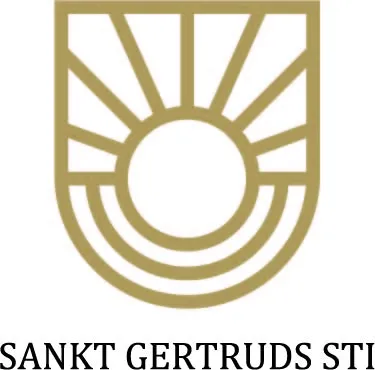General information
RDP Priority
- P6. Social inclusion and local development
RDP Focus Area
- 6B: Local development
RDP Measure
- M19: LEADER/CLLD
Beneficiary type
- Public authority / body
Summary
Djursland is a hilly lowland peninsula in Denmark rich in natural and built heritage. The northeastern part of the peninsula has a significant number of historical churches, and creating a path to connect them establishes an attraction that highlights the area's medieval history.
LEADER funds were used to mark the path, establish shelters and picnic places along the route, and develop a website and other promotional materials.
Results
- The ‘Sankt Gertruds Sti’ pilgrimage route was successfully established and is about 80 km long, connecting 14 churches. Along the way, visitors can explore the area’s unique cultural and historical sites.
- The path is free and open to all. Its popularity is evident from the books available for travellers to sign upon visiting.

Promoter
Norddjurs Provsti
Funding
Total budget 304 978 (DKK)
EAFRD: 152 489 (DKK)
Private/own: 114 989 (DKK)
Other: 37 500 (DKK)
Resources
Documents
Links
Context
Heritage trails offer opportunities for economic development in rural Europe as they take advantage of these regions' unique historical and cultural assets. By promoting local heritage, these trails attract tourists who seek authentic experiences, thereby increasing visitor income in rural areas. This influx of visitors stimulates demand for various services, including accommodation, dining and local crafts, contributing to the overall economic vitality of the region.
Moreover, heritage trails can foster community engagement and pride among residents. Local stakeholders often become involved in trail development and maintenance, which enhances social cohesion and creates job opportunities within the community. As residents take ownership of their cultural narratives, they are more likely to invest time and resources into preserving these assets for future generations.
Djursland is a hilly lowland peninsula in Denmark. It is located at the entrance to the Baltic Sea, between Denmark and Sweden. Eleven churches located in the very northeastern corner of Djursland wanted to create a heritage path to connect them to better showcase the rich medieval history of the area. A central point on this pilgrim route would be the 13th century church in the town of Grenaa, which is devoted to Saint Gertrude.
Objectives
The aim of this project was to create a new tourist offer that would connect the medieval churches in the area through an easily accessible route. This new infrastructure would allow visitors and tourists to experience the area’s natural and cultural heritage by walking, running, riding, cycling, driving or even sailing.
Activities
Project activities included:
- Obtaining various permits to establish the walking path/route.
- Physically marking the path between all relevant churches.
- Creating individual 'stamps' for each church, allowing walkers to document their visits.
- Establishing shelters and picnic areas at churches along the path. This was delayed due to permit issues and was completed towards the end of the project.
- Developing a website to inform tourists, walkers, hikers, and other visitors.
- Producing printed flyers with maps to promote the path and assist with way-finding.
- Creating the Pilgrimage Pass, resembling a passport, with descriptions of each church along the route.
Main results
- The pilgrimage starts at Sankt Gertrud's Church in Grenaa, located in northern Djursland. The route spans 80 km and connects 14 churches, a church ruin and a church forest in the north Djursland church district of Fornæs. The route is divided into 16 stages, each going from church to church. Along the way, visitors can explore unique cultural and historical sites as they walk along old historic paths, small roads, forests, cliffs and beaches. Travelers on the pilgrimage encounter the area's diverse landscapes.
- There is no exact data on the number of visitors, as the path is free and open to all. However, it is evident that it is highly used and very popular, as seen from the books available for travellers to sign upon visiting the path.
- The project has been a great success and continues to evolve and develop. In 2025, three audio walks will premiere along Skt. Gertrud's path.
Key lessons
- Heritage trails can serve as a catalyst for sustainable economic growth in rural Europe by attracting tourism and fostering community involvement. This dual impact revitalises local economies and cultural identity and makes heritage trails a valuable asset for rural development strategies.
- The implementation of this project showed that close cooperation is needed with local stakeholders, as well as local authorities and destination managers.
- One lesson learned is that another hiking route premiered within a few weeks of Skt. Gertrud’s path is being launched. Better planning could have ensured all tourist offers were aligned to promote the area as a destination more effectively.
